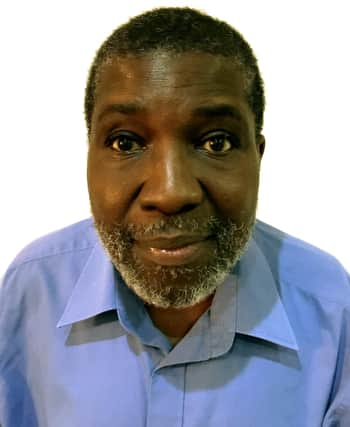Sheffield doctor who had a stroke calls for more research to help rebuild survivors’ lives


Professor Ade Adebajo, who lives in Whirlow, Sheffield had a stroke at Barnsley Hospital, where he is a consultant rheumatologist and Clinical Director for Research and Development, in 2015. It took a year of intensive rehab before he was able to return to work.
He has called for much more research into how to prevent strokes and how to ensure that stroke survivors have the best rehab to help with their recovery.
Advertisement
Hide AdAdvertisement
Hide AdProfessor Ade Adebajo, now 63, said: “I had silent hypertension. All the readings were usually normal so it’s hard to detect.
“I drove to work at Barnsley Hospital that morning, parked my car and went to my office. I was in a meeting and suddenly started having weakness on my left side, my left leg, feeling funny on the left side of my face, and then I slumped into the chair.
“The FAST campaign helped me diagnose my own stroke.
“Fortunately for me, my office was just above accident and emergency. I was given an immediate MRI scan then taken to the Royal Hallamshire Hospital in Sheffield for emergency neurosurgery.
“It took me 11 months to return to work. It was a very long road. I still have weakness in my left side, my arm and my leg and now walk with a stick. I have a wheelchair but I’m using that less and less. With rehab at least I’m fortunate.
Advertisement
Hide AdAdvertisement
Hide Ad“I’ve been able to go back to work because I had a good amount of rehab but others haven’t been so lucky. Many other people have had to stop work. They should be able to return to work if they wish.
“I had physiotherapy, occupational therapy and electrical stimulation therapy. It’s difficult to say which has been the most effective – it’s important to have access to all of these.
“I had rehab for more than a year. They were able to get funding so that as long as you were improving you can continue to have physio.
“I also went on a three week long intensive therapy programme at University College London doing exercises like practising with cutlery, fastening buttons, and using the treadmill and gym equipment. They even had a mock kitchen which was just great.
Advertisement
Hide AdAdvertisement
Hide Ad“Without all this I wouldn’t be back at work. It’s as stark as that. I love being a doctor looking after people. I’m glad that I myself was looked after so I could carry on doing this.
“It’s expensive but you can’t put a cost of the quality of someone’s life. Stroke can be devastating to individuals, family and society.”
The Stroke Association’s new report - the first UK-wide project to map research priorities across the entire stroke care and treatment pathway – reveals where research can address the issues holding stroke survivors back from rebuilding their lives after a devastating stroke.
There are over 100,000 strokes in the UK every year, and there are now over 1.3 million stroke survivors in the UK. However, according to the most recent figures from the UK Medical Research Council, only £30m of public and charity health research spending goes on stroke. This equates to less than £25 per stroke survivor per year compared to £161 per person living with cancer.
Advertisement
Hide AdAdvertisement
Hide AdSamantha Jones, Associate Director of the Stroke Association said: “One in five people will have a stroke in their lifetime. Stroke happens in the brain, the control centre for who we are and what we can do. Every stroke is unique because the brain is so complex and stroke can happen in any part of it. This means there are as many different impacts of stroke as there are stroke survivors, posing a huge challenge for research.
“Despite major breakthroughs over the last 10 years, we now know where there are significant blind spots in treatment and care. These are holding people back from rebuilding their lives. With the number of people having strokes set to rise – it’s predicted that the number of stroke survivors aged 45 and over could rise to 1.4 million in 2025, and 2.1 million in 2035, we must act now and invest in the research that will make the biggest difference to the lives of people affected by stroke.”
Over 1,400 people affected by stroke and professionals in stroke took part in the project, which was carried out in partnership with the James Lind Alliance (JLA), as well as individuals and organisations representing stroke patients, carers and professionals in stroke.
The Stroke Association is sharing the findings as part of its new report “Shaping Stroke Research to Rebuild Lives: The Stroke Priority Setting Partnership results for investment.” The report sets the agenda for stroke research and identifies the areas that most urgently need investment. There are two lists of 10 priority areas: the first in stroke prevention and acute care, and the second in rehabilitation and long-term care, ranked in order of importance.
The top priorities in each list are:
Advertisement
Hide AdAdvertisement
Hide Ad· Interventions to stop stroke. Stroke strikes every five minutes in the UK, but we know that most (80-90%) strokes are preventable. We need increased investment in research so people can avoid the devastating effects of stroke in the first place.
· Understanding of, and treatment for mental and emotional problems. Three quarters of stroke survivors experience a change in their mental health, we need research so that people can overcome significant effects such as anxiety and depression after stroke.
Find out more at stroke.org.uk